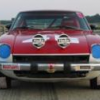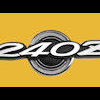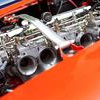You must tune the carbs in two stages. 1. Idle 2. Off idle
**** DISCONNECT CHOKE CABLES **** Pull them out of the levers on the carb! Make sure the jets move up and down freely and do not bind. To tune the idle, you must warm up the car and, as mentioned above, ensure that timing and valve lash are set correctly with no vacuum leaks. The pistons in the carbs should fall freely and both at the same rate when dropped by your fingers. Do this with the oil dampers removed. You should also visually ensure they fall completely to the bottom of their travel. The needles should be straight and placed in the piston so that the shoulder of the needle is aligned with the flat of the piston bottom, not with the machined trough. (refer to the next two pictures).
Before warming up the car, turn the knurled knobs under each jet all the way up then back down 2.5 turns. The next picture shows how to turn the knob. It is like a regular screw and turning the jet up would be turning CW if you were looking at it from below. The first step in tuning the idle is to ensure the linkage from the accelerator pedal to the carbs is disconnected. Simply pull the nylon socket off the Aux. Throttle shaft (8) in the figure below. The next step is to balance the air flow into each carb at idle. You do this by turning the "throttle ajdusting screws" (10) in the figure below.
There is one for the front carb and one for the back.
The goal is to get equal air flow into each carb AND get the idle where you want it.
It is good to use a syncronizing device to measure air flow.
Once you are happy with the air flow balance, the next step is to adjust the fuel balance between the carbs.
A quick check of fuel balance is to lift each carb piston up a little (one at a time with a 10 sec break between lifting) and note how the engine stumbles. It should behave the same for each piston being lifted. Next lift a piston all the way up and see if the car will run on just one piston. Repeat with the other piston. If the car stalls out, restart (you may have to blip the throttles by hand to get it going as the rod coupling the throttle linkage should still be disconnected).
When you raised a piston, you disabled THAT carb so the car was running on the other. If one carb runs worse than the other, give it more fuel (turn its jet down 1/2 a turn) and re-balance the air then try disabling both carbs and compare. Both should run equally crappy. Repeat until happy then have a look at the plugs #2 and #5 so verify that the front carb #2 and back carb #5 are similar.
I'll add off idle tuning later.










